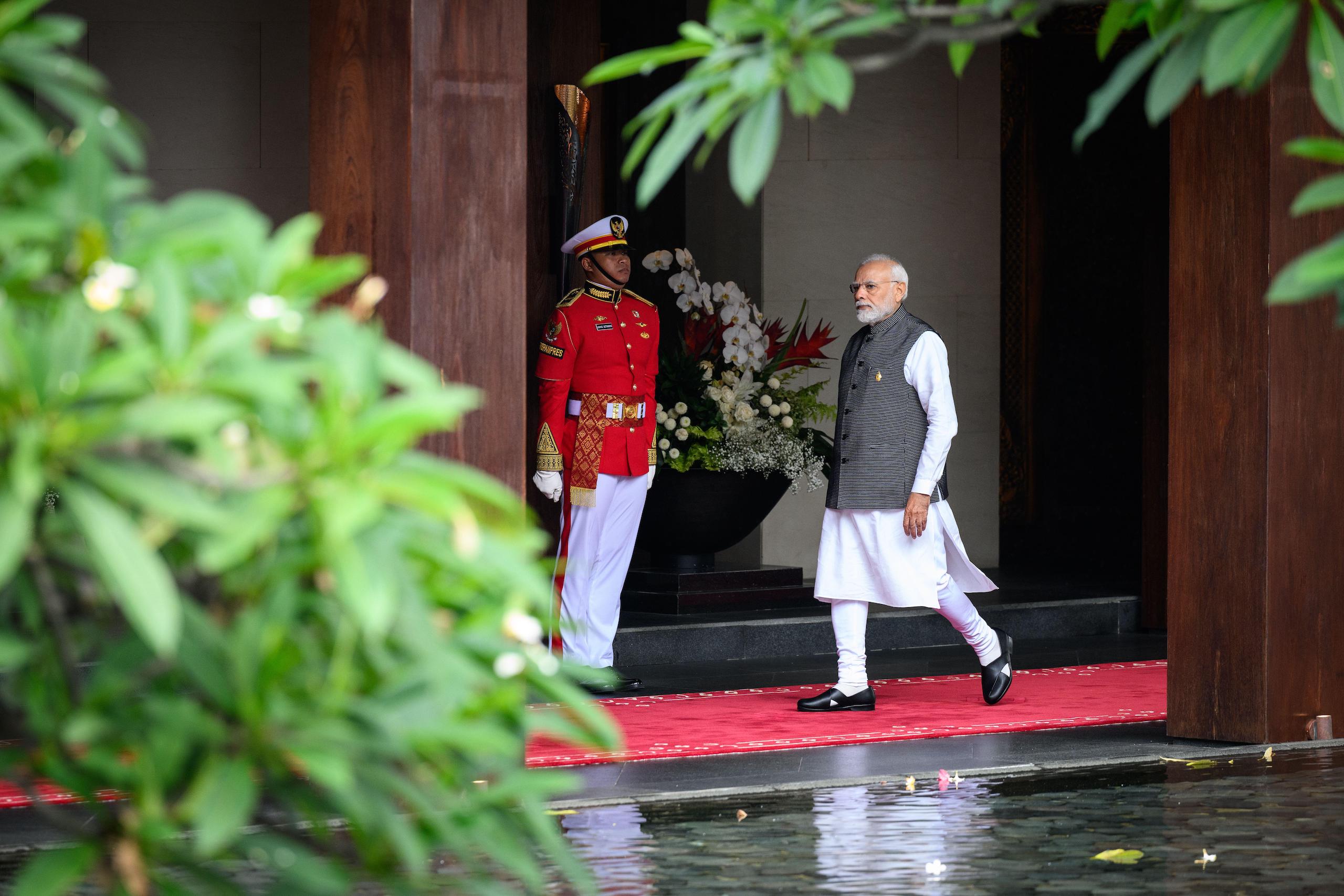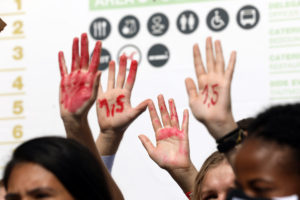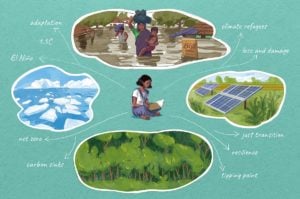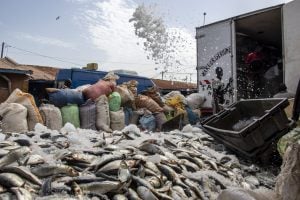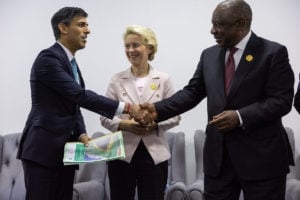New Delhi is shutting down in preparation for the arrival of world leaders at the G20 Summit on 9-10 September. But in the run up to the mega-event, it’s important to look at India’s vision for the summit, and ask whether it has fulfilled the goals it set out for itself – especially when it comes to climate challenges faced by the Global South.
Throughout its presidency of the G20, which started on 1 December 2022, the Indian government has indicated that it wants to be the voice of the Global South. Emphasising a fairer way forward for the global economy is an ideal position for India to take, given that in 2022, it had the lowest per capita GDP of any of the G20 countries, at USD 2,389.
Such a position would have also meant a synergy between the G20 Summit and the UN climate meeting COP28, after Sultan Al Jaber, the COP28 president, called on G20 countries to take the lead on climate. COP28 is scheduled to be held in the United Arab Emirates from 30 November to 12 December, to discuss global progress on climate targets.
But since Russia’s invasion of Ukraine, meeting after meeting of the G20 has resulted in deadlock, without a single consolidated statement. The last G20 Summit, under the presidency of Indonesia, resulted in a statement which included a paragraph on the Ukraine war, but Russia and China distanced themselves from this. During India’s presidency, a group of countries led by the United States has insisted on including the war in statements, while China and Russia have refused. As a result, a meeting of G20 foreign ministers in March ended without a joint statement, as did meetings of G20 finance ministers. Critically for the environment, the meetings of the environment ministers and of the G20 chief scientific advisers have also concluded without a consensus statement. There is no reason to believe that the G20 Summit will have a different outcome.
The G20 is a forum comprised of most of the world’s largest economies, to provide a space for cooperation on economic issues.
Its current members are Argentina, Australia, Brazil, Canada, China, France, Germany, India, Indonesia, Italy, Japan, Mexico, Russia, Saudi Arabia, South Africa, South Korea, Turkey, the United Kingdom, and the United States, plus the European Union.
G20 countries account for “around 80% of global economic output, nearly 75% of global exports, and about 60% of the world’s population”, according to the Council of Foreign Relations.
After the meeting of G20 foreign ministers in March, India’s foreign minister, S Jaishankar, stated that “there were differences which we couldn’t reconcile”, in the context of the war in Ukraine. But the G20’s consistent failure to reach consensus has significant negative consequences for India’s vision of bringing the ‘voice of the Global South’ into the G20. Without consensus statements, there is nothing to show that such a voice has been included.
An even bigger issue for India’s leadership might lie closer to home. At least the leaders of the G20 are meeting, in sharp contrast to South Asia: the South Asian Association for Regional Cooperation (SAARC) has not had a summit since 2014. With no forums for discussion even taking place, there is no possibility of finding regional consensus.
The lack of consensus in South Asia is all the more striking because of the parallels that exist within the region. From Afghanistan in the west to Myanmar in the east, the countries of South Asia have a largely similar per capita GDP, and similar economies that are dependent on agriculture and the monsoon. And crucially, they are all highly vulnerable to the impacts of climate change.
South Asia’s shared climate risks
The floods that hit Pakistan, India, and Bangladesh in August 2023 underscore the joint threats that South Asian countries face from an increasingly erratic climate. More than 100,000 people had to be evacuated from their homes in Pakistan. In the mountainous Indian province of Himachal Pradesh, more than 360 people were killed and 12,000 homes destroyed. And in Bangladesh, 50 people were killed and 200,000 displaced. Despite the floods, India actually saw an overall rainfall deficit, making it the driest August since 1901. Similar fluctuations are evident in Pakistan and Bangladesh, with major consequences for food security.
The countries of these river basins thrive and suffer together, but they do not collaborate
The reality is that the monsoon system and rivers of these countries, their lifelines, are intertwined. The Indus, Ganga and Brahmaputra are shared between Pakistan, India and Bangladesh, fed by Himalayan glaciers that are undergoing drastic changes as a result of climate change. The countries of these river basins thrive and suffer together, but they do not collaborate. Nor do they have an advocate pushing a joint South Asian perspective – of over a billion people – on the global stage.
It makes obvious sense for the region to have a consolidated approach to climate action since its individual economies are impacted in similar ways by climate (in)action. And yet, there is no sign of any of the three countries making regional action to deal with this shared transboundary threat a priority.
Politics distracts from South Asian coordination on climate
Instead, all three countries are resolutely focused on politics. Pakistan has a caretaker government in place ahead of an election, the date of which remains unclear; the country may opt for redistricting based on its new census results. Indian elections are supposed to be held in early 2024, but the incumbent government has just faced a no-confidence motion in Parliament (which it won) over the situation in the mountainous province of Manipur, where more than 150 people have been killed and 50,000 displaced since early May due to inter-community conflict. In Bangladesh, elections are scheduled for the end of 2023 or early 2024. The opposition has been demanding a caretaker government to ensure that elections are free and fair – a demand that the current government has refused to entertain.
This political disarray, which makes any kind of coordination in South Asia difficult, also limits the region’s bargaining power in the climate space, where dominant countries are unlikely to be open for negotiations in the first place. With the trial of the former US president Donald Trump set for March 2024, the United States is already in the midst of one of its most partisan election campaigns. Europe is focusing the majority of its attention and funding on the ongoing war in Ukraine. And China’s growth rate has underperformed expectations. Distracted by internal strife, war, and economic struggles, it will be very difficult to persuade these big actors to agree to the funding and sacrifices that the Global South realistically needs from them – and should be asking for – to help deal with the climate crisis.
Unfortunately, distracted by their own political problems, South Asian countries do not even seem to be trying. There is no sign of the effort seen in 2009, when Jairam Ramesh, India’s then-environment minister, persuaded South Asian environment ministers to take a joint position in UN climate negotiations – although that attempt soon fizzled out.
The road to COP28
In the months remaining before COP28 in Dubai, developing countries generally, and South Asia in particular, will struggle to negotiate a joint position on the single most important issue at the summit: climate finance. The importance of the issue was recently emphasised by the COP28 president Sultan Al Jaber. An article on India’s vision for COP28 co-written by Indian MP Anil Aggarwal also said: “Climate justice mandates that vulnerable countries receive the financial support and robust infrastructure needed to combat the far-reaching impacts of climate change.”
India has made no effort to portray this year’s climate disasters as an interlinked South Asian tragedy. Neither have Pakistan or Bangladesh.
But if this is such an important issue, the current linked disasters unfolding in South Asia should have received far more attention – both as a cornerstone of discussions at the G20 Summit, and also as an important lead into COP28. Climate finance is needed precisely to deal with such disasters, to build resilient infrastructure and to compensate for losses. Effective climate finance must be cooperative, targeted at ecological regions and not limited to political borders.
Unfortunately, India has made no effort to portray this year’s climate disasters as an interlinked South Asian tragedy. Neither have Pakistan or Bangladesh. This signals to the rest of the world that the region is simply not interested in making cooperative climate action a priority. If that is the case, the rest of the world will continue to ignore the disasters. After all, it is not their citizens dying, being displaced, or pushed further into poverty.
